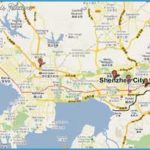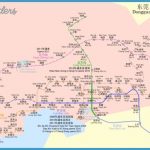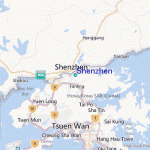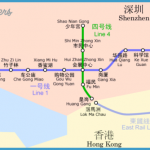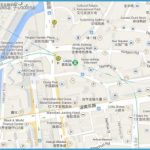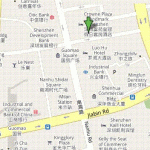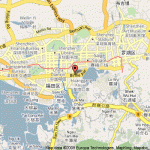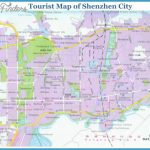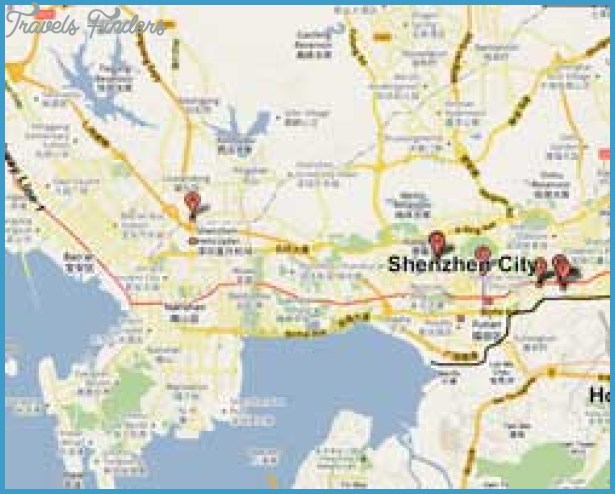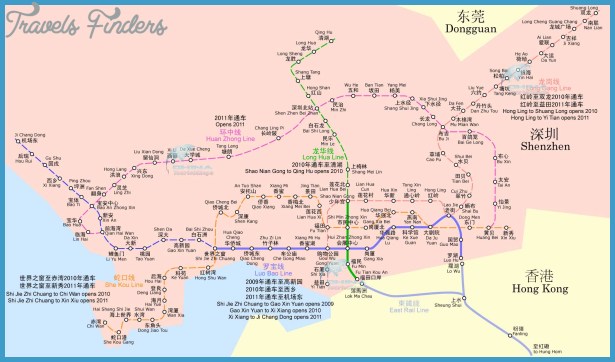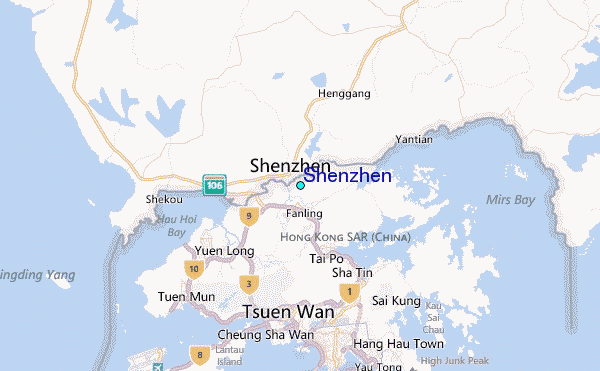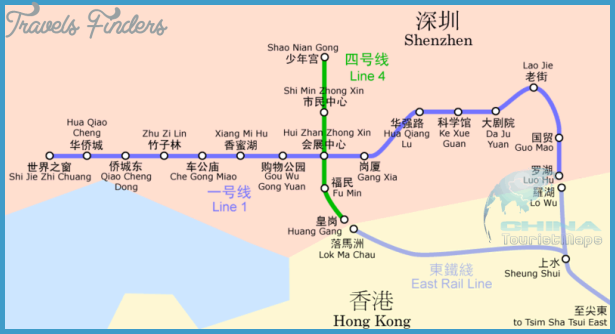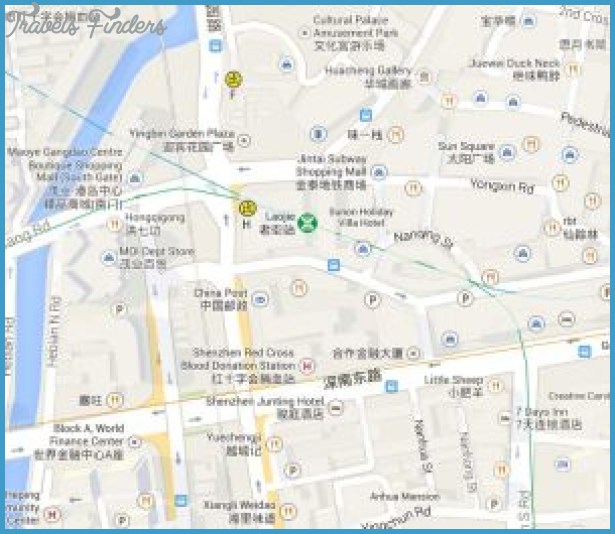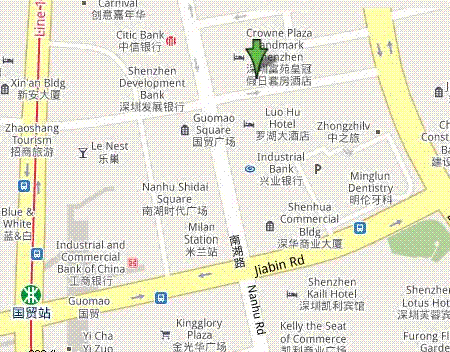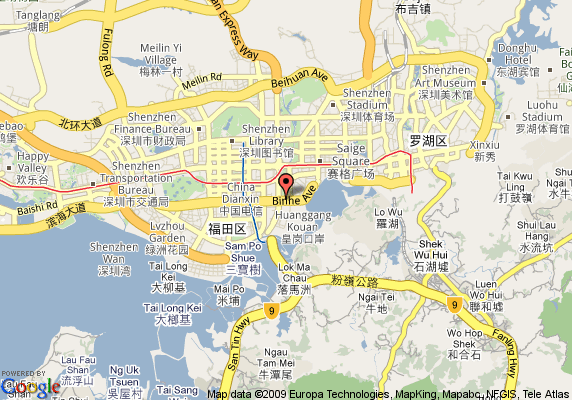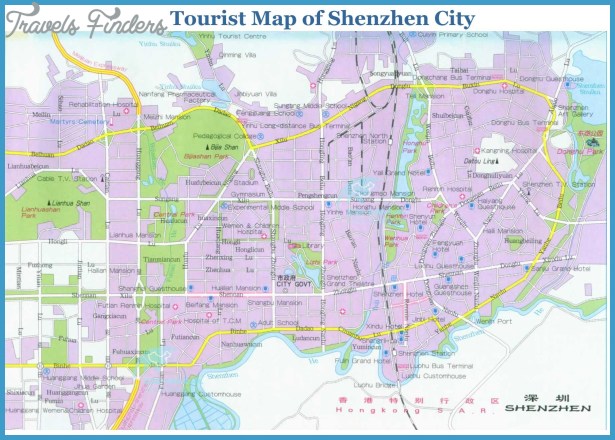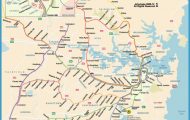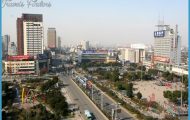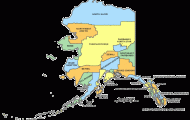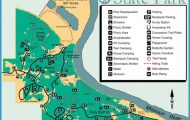SHENZHEN EAT STREETS
The Chinese love to eat. They love the company of other people. They are absolutely addicted to noise. Put these together with hot nights and giant flashing neon signs and you have eat streets, a phenomenon in many Chinese cities, but one for which Shenzhen is justly famous. Large crowds of excited people eating, chatting and, in summer, even
sitting out in open places watching their favourite TV soap operas on giant screens.
There are dozens of eat streets in Shenzhen, each with its own characteristics, and we strongly recommend that you make at least one or two of them part of your Shenzhen experience.
In the body of the text we’ve mentioned some of our favorite eateries and added phone numbers. Feel free to try them. Small cheap restaurants are notoriously ephemeral. It’s more than possible that by the time you get to try them they may have changed hands, lost their brilliant cook, or even be no more. Life’s like that. This isn’t fine dining on bone china. It’s rough gutsy food that ordinary people eat. We usually just wander up and choose somewhere at random. We’ve only rarely been disappointed. If you don’t speak Chinese, most restaurants have menus with pictures on them. Choose by colour if you must. It’s fun.
Most of these places do not take credit cards and the prices will meet with your banker’s approval.
Regional Food in Shenzhen Eat Streets
Nearly all fourteen million plus Shenzheners are immigrants and they brought their food with them from every corner of China. There isn’t just one kind of Chinese cuisine. It varies dramatically. So let us try to put some order into the chaos of regional Chinese cuisine and tell you where to get it.
Cantonese food is the food of Guangdong Province where Shenzhen is situated. A famous Chinese proverb says that you should eat in Guangzhou because the food is best there. The things to look out for are dim sum, the casual brunch is served from trolleys with copious amounts of tea, winter food such as bouchai dishes served in bubbling clay pots and game. Yes snake. They do eat it. Best Cantonese food in Shenzhen is at Bagua First Rd and at the Laurel Chain of restaurants.
Chaozhou food is the cuisine of the Chaozhou people of eastern Guangdong. It’s popular in Hong Kong and tends to get mixed up with Cantonese food, especially in dim sum. The Chaozhou often eat congee, rice gruel, with their food instead of rice. Chaozhou specialities include lu dishes stewed in soy sauce and goose dipped in white vinegar. Carianna Restaurants serve it as do Chao Jiang Chun .
Hunan food comes from the province immediately to the north of Guangdong. Hunanese are probably the largest single immigrant group in Shenzhen so their food is everywhere. Indeed it’s hard to avoid it. Most cooks seem to be Hunanese and their green and red seems to creep into all sorts of other cuisine. It’s HOT. The chili was welcomed from South America when the Portuguese brought it. For good Hunanese food, try the Min Jian Wa Guan Wei Tang Guan chain with its big Ali Baba pots outside.
Sichuan was formerly the poorest province and migrant Sichuan workers brought Sichuan food with them wherever they went. It has the reputation in the West of being Chili hot. That’s only half the story. Sichuan has a style called ma la meaning numb hot. It uses copious quantities of Sichuan pepper, tasty in small quantities but numbing in large. A real Sichuan meal should leave you unable to feel your lips. Moderate it with lots of rice.
The ancient capital of Xi’an, the western province of Gansu and Xinjiang are the homes of the people who brought Moslem food to Shenzhen. You can pick the Moslem restaurants from the Arabic writing on them: it just says halal or in keeping with the Koran. We find these very welcoming restaurants, cheap but good. There’s no pork but there’s lots of lamb and xiao, flat cut noodles. There are concentrations of these restaurants at Che Gong Miao, Hubei Village and Huaqiang Bei.
And we’re old Beijingers so we pine for Northern food. Beijing and Shandong are the real homes of this style. You can get the great delicacies like Beijing roast duck anywhere, even in Cantonese restaurants. But for authentic food try wheat noodles eaten with alternate bites of raw garlic. That separates the sheep from the goats. Jiaozi, the northern pork and cabbage pastries are common but we think the Taiwanese chain Din Tai Fung does them best. Another chain worth watching out for is Lao Bei Fang or Old Northerner.
And finally, Uighur food. The Uighurs from Western China are common in Shenzhen. They look like Greeks and Italians and speak Turkish. Their specialties are roast lamb, xiao noodles, and many kinds of breads. Kebabs are a speciality covered in sesame seeds and cumin. Their naan is terrific. You can also see them on the streets selling strange but tasty confections of raisins and nuts. Best place to eat Uighur food is Nanyuan Rd eat street.

